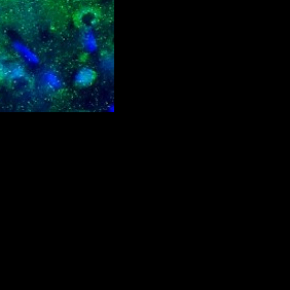
Stroke: preventing the damage by acting on the neuronal environment?
To protect neurons and limit the damage after a stroke, researchers from the CNRS, the University of Caen-Normandie, University Paris-Est Créteil, and the company OTR3 have pursued an innovative path: targeting the matrix that surrounds and supports brain cells. Their results, just published in the journal Theranostics, have confirmed this strategy on rats, and will lead to a clinical study between now and late 2019.
With over 300 cases per day in France, stroke is the leading cause of handicap among adults, and the second cause of death. 80 to 85% are caused by the occlusion of a cerebral artery by a blood clot (ischemic stroke), with nearby neurons dying because of oxygen deprivation. The only existing treatment involves eliminating the blood clot, which is only possible during the first few hours following a stroke, and consequently available only for a minority of patients. Moreover, brain lesions can persist and worsen long after the start of a stroke, with no treatment being currently available to slow them, or to improve functional recovery.
Numerous avenues of research are studying how to protect neurons from this degeneration. However, treatments attacking this degeneration have only met with clinical failure, which prompted a team led by a CNRS researcher, Myriam Bernaudin, to take an interest in a little explored domain: the environment of the cells, known as the extracellular matrix. This matrix, which offers the cells structural support and houses growth factors, ends up being disorganized following a stroke, thereby amplifying neuronal death. The team from the laboratory Imagerie et stratégies thérapeutiques des pathologies cérébrales et tumorales (CNRS/UNICAEN/CEA) thus approached colleagues specializing in the extracellular matrix at the laboratory Croissance, réparation et régénération tissulaires (CNRS/UPEC), along with the biotechnology company OTR3, which had already brought to market “matrix therapy” treatments for the healing of cutaneous or corneal ulcers.
The researchers demonstrated on rats the effectiveness of this new approach in protecting the brain and improving functional recovery after an ischemic stroke. The intravenous injection of an agent that mimics certain structural components of the extracellular matrix, known as heparan sulfates, protects and reconstitutes this matrix, promotes the development of new neurons and the regeneration of blood vessels, and improves the recovery of sensory and motor functions.

© Xavier Laffray / CRRET
It is therefore a promising avenue for limiting the aftereffects of a stroke, one that would complement existing techniques for eliminating blood clots. Pilot clinical trials should begin between now and late 2019.
This research was funded by the CNRS, the French National Research Agency, the University of Caen Normandie, and the Normandie region. The clinical development will be conducted with the company OTR3, which received funding from the European Commission as part of H2020 SME financing (no. 811729).
A heparan sulfate-based matrix therapy reduces brain damage and enhances functional recovery following stroke, Yacine Khelif, Jérôme Toutain, Marie-Sophie Quittet, Sandrine Chantepie, Xavier Laffray, Samuel Valable, Didier Divoux, Fernando Sineriz, Emanuelle Pascolo-Rebouillat, Dulce Papy-Garcia, Denis Barritault, Omar Touzani*, Myriam Bernaudin*. Theranostics, 12 November 2018. DOI : 10.7150/thno.28252 http://www.thno.org/v08p5814.htm
* Contributed equally.


